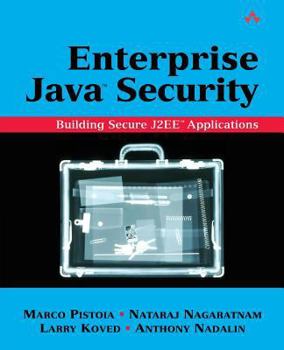Enterprise Java 2 Security: Building Secure and Robust J2EE Applications
Enterprise Java(tm) Security: Building Secure J2EE(tm) Applications provides application developers and programmers with the know-how they need to utilize the latest Java security technologies in... This description may be from another edition of this product.
Format:Paperback
Language:English
ISBN:0321118898
ISBN13:9780321118899
Release Date:February 2004
Publisher:Addison Wesley Publishing Company
Length:581 Pages
Weight:2.02 lbs.
Dimensions:1.4" x 7.0" x 9.1"













